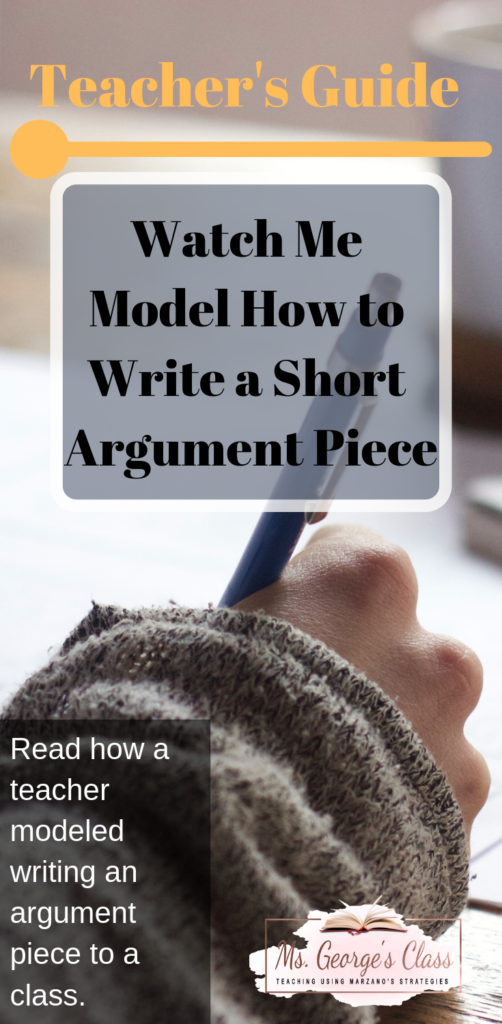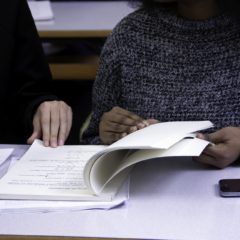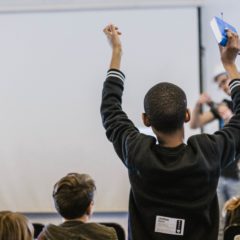
According to Marzano, there are three knowledge progresses that students encounter when learning a new concept. Those progresses are cognitive, associative, and autonomous. When introducing a new concept, teachers have to model the skill or strategy for the students. In my district, we break the concepts into simpler terms in the form of a gradual release lesson comprised of an “I do, We do, and You do” lesson. “I do” is the direct instruction, modeling, and guided practice of the lesson.
I used modeling within my class while teaching my Reading Lab students how to write an argument paragraph.
- First, I placed the writing prompt under the digital camera, and I read aloud the prompt. I did a think-aloud with the writing prompt and underlined meaningful words.
- Next, I read the writing rubric and asked students to repeat for understanding.
- I performed a think-aloud for the introduction, an answer for the prompt, and wrote a claim. I wrote down my thoughts on the paper and had the students contribute their thoughts.
- Afterward, I set the timer for two minutes, so the students would construct an introduction sentence. I walked around the classroom to observe students working.
- Once the timer rang, I asked for volunteers to read their introduction. The students and I provided positive feedback and suggestions.
- I continued this behavior until the claim and supporting details were identified.

Modeling helps eliminate confusion and misunderstanding that can occur without guidance. Students were engaged and working on the assignment because of the think-aloud and timer. I was also able to address issues after students wrote their sentences. The students felt successful, and I was able to obtain a




I love how you’ve broken it down into such manageable chunks for the students. I’m sure this will keep students better engaged and fewer mistakes. Thank you! I will try this.
Yay! Tell me how it goes.